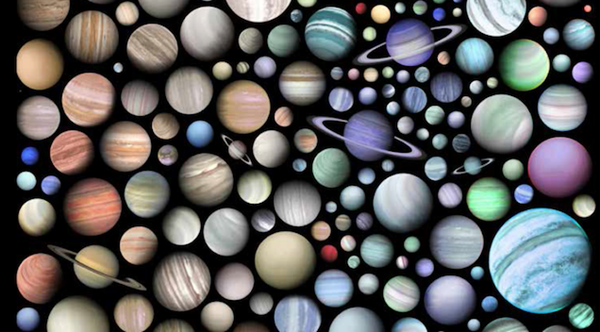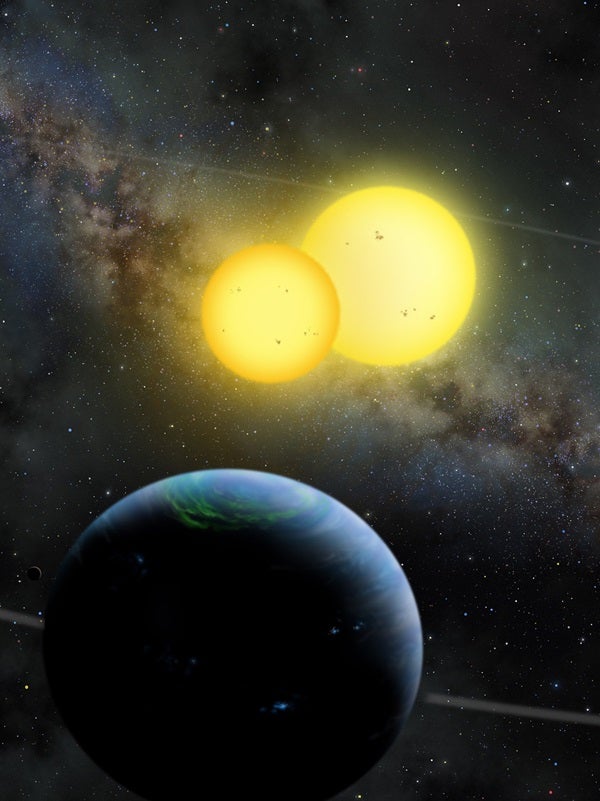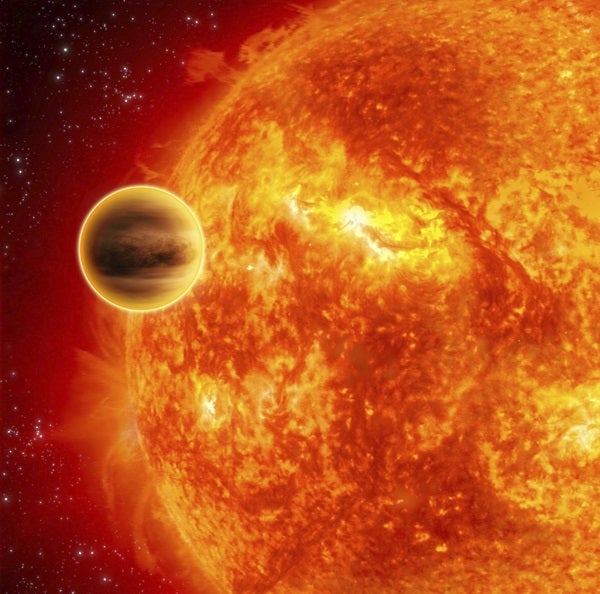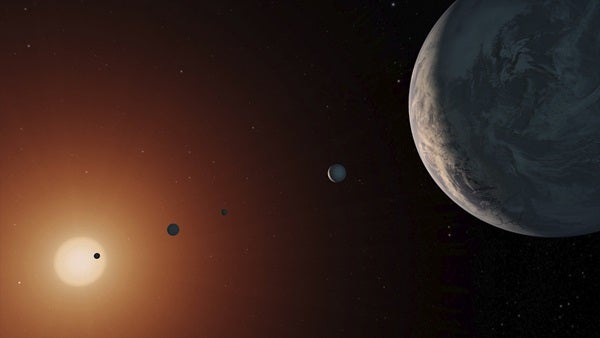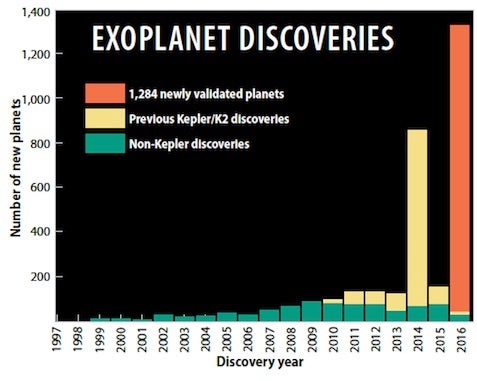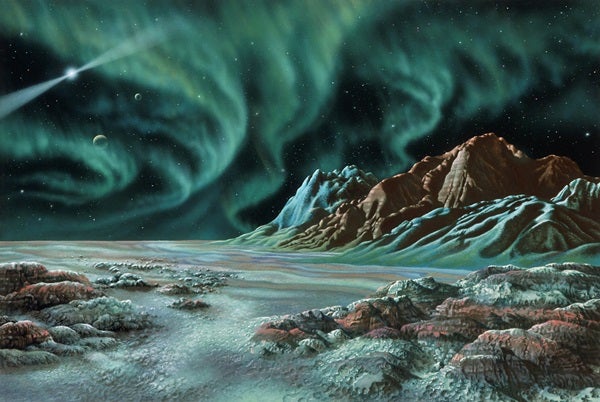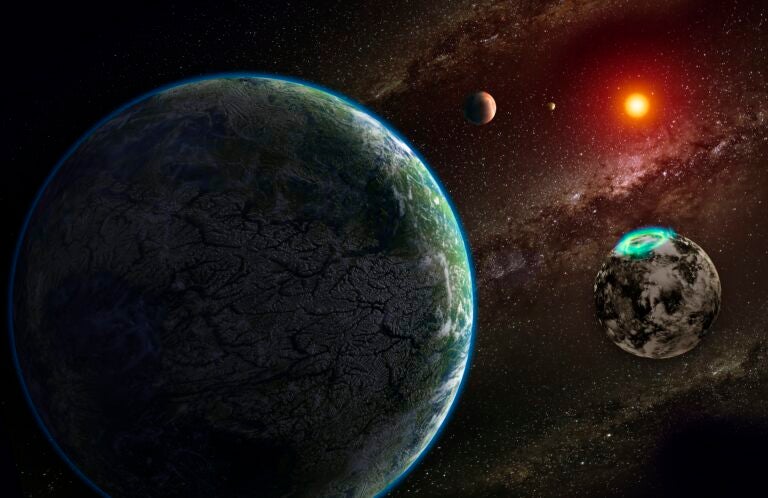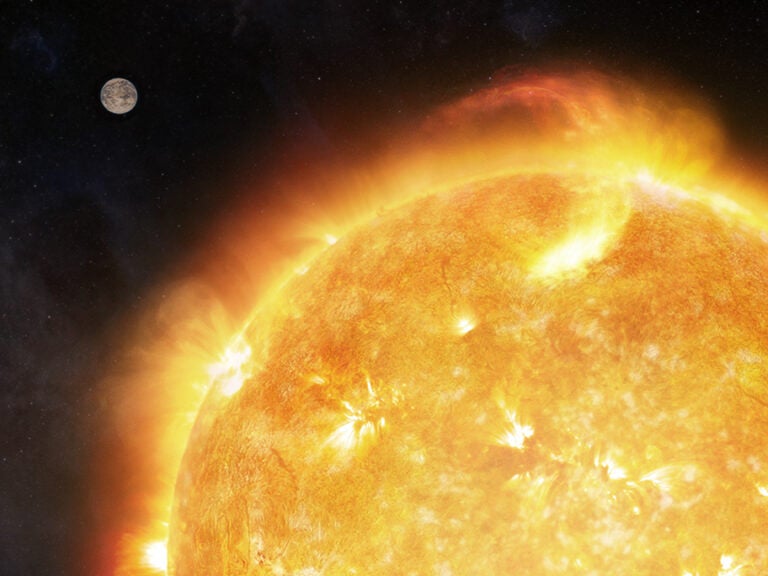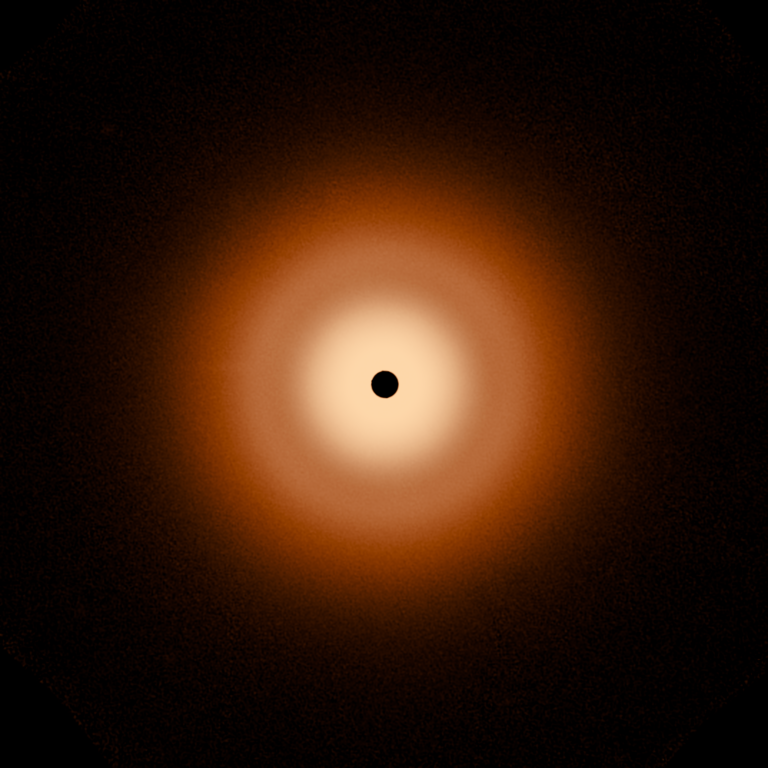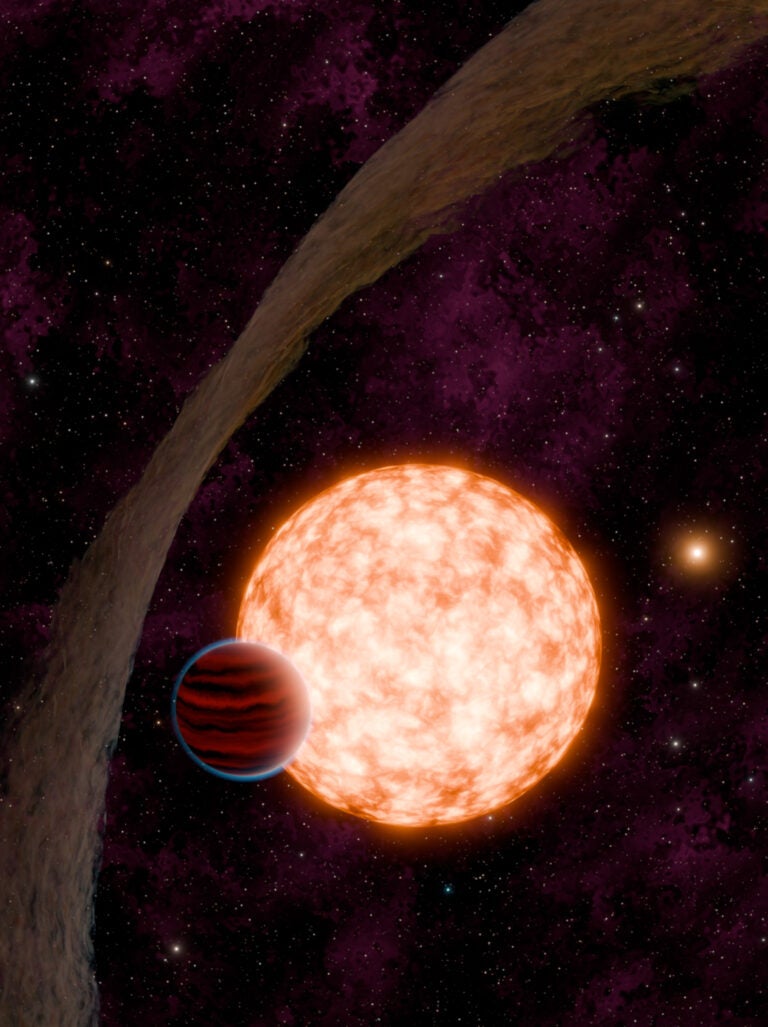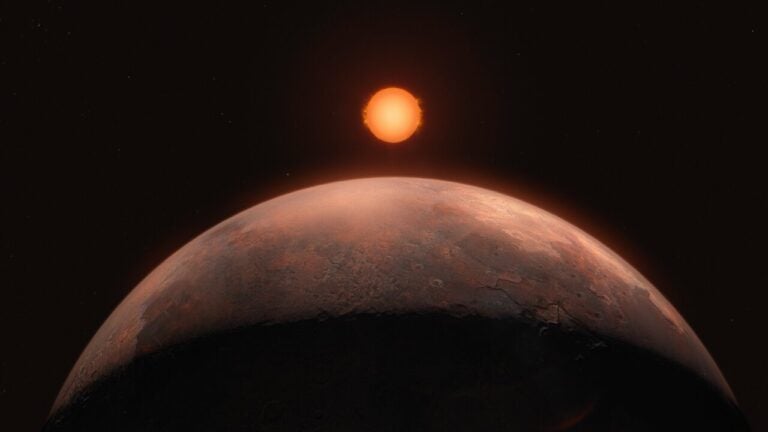From backyard observers with modest telescopes to world-class instruments and massive space observatories, exoplanet science is now being conducted at all levels. While some of the field’s earliest puzzles remain, new discoveries and methods are growing at an astounding pace. And exoplanets are still delivering surprises at every turn, just as they have since the birth of the field.
The early days
Humans, scientists included, have speculated about planets around other stars since the latter were first understood as distant suns. But, setting the tone for the field’s future, the first exoplanets found weren’t what astronomers had expected.
In 1992, Aleksander Wolszczan and Dale Frail were examining a newly found pulsar, PSR 1257+12, when they discovered timing variations in the pulses of light coming from the dead star. Such variations are common, since pulsars are often found in binary relationships with other stars; the variations can inform astronomers about the system’s mass. But in this case, the masses of the companions — there were two — were tiny, only a few times the mass of Earth.
Kepler-35, a binary star system in Cygnus, lies some 5,000 light-years away. Amazingly, the Kepler spacecraft found that this system of orbiting suns holds a planet that circles both stars. It has just over one-eighth of Jupiter’s mass and a diameter of about 70 percent that of Jupiter. The planet completes an eccentric orbit once every 131 days at a distance about 60 percent as great as the Earth-Sun distance.
Just a few years later in 1995, Michel Mayor and Didier Queloz reported a planet around the star 51 Pegasi — a normal, main sequence star not so different from our Sun. But despite the more conventional setting, this planet reset the stage again. 51 Peg b, as it’s known, is half the mass of Jupiter and orbits its star in only four days. Mayor and Queloz had found the first hot Jupiter.
Scientists still aren’t sure how planets form or survive in a pulsar system — not to mention the planets they found are of a size not observed in our solar system. Nor are astronomers sure how hot Jupiters, for which our solar system has no equivalent, come to exist so close to their stars — if they migrate across their star systems, how and when do they do so, and why do they stop? Despite plenty more examples and more than 20 years to study the question, these planets still puzzle astronomers.
In 2003, the High Accuracy Radial velocity Planet Searcher (HARPS) saw first light at La Silla Observatory in Chile. HARPS was one of the early workhorses of exoplanet detection, and it still holds the record for the most discoveries by any ground-based search.
Model citizen
In 1999, astronomers settled in to carefully observe the star HD 209458. They already had proven the star hosted a planet, but they were after a new breakthrough. They were hoping to catch the planet as it crossed its star in our line of sight, detectable as a tiny dip in the star’s light: a transit. Two different groups succeeded, and suddenly astronomers had a new detection technique at their fingertips.
Years later, HD 209458 b became the first exoplanet to have its spectrum — the fingerprint of light that tells observers the components of the planet’s atmosphere — directly observed. Researchers detected sodium in the atmosphere’s outer layers.
The modern era
In 2009, the Kepler Space Telescope launched, and the trickle of planets became a deluge. Kepler, staring at tens of thousands of stars and watching for transits, delivered hundreds of planet candidates, then thousands, within only a few years. Astronomers didn’t have to examine planets one by one any longer, but could perform population studies, comparing these worlds in large numbers.
Of course, Kepler had its problems, too. Stars are more variable than scientists expected, and exoplanets harder to find. But Kepler taught astronomers more about stellar activity than decades of previous studies. Kepler also ran into mechanical difficulties, but astronomers learned to work with and around the telescope’s troublesome reaction wheels to steer it to new findings and new missions. They innovated, adapted, and overcame.
With time, more precise instruments, and more clever analyses and techniques, astronomers found smaller planets and planets farther from their stars. Smaller telescopes joined the fray, from the Kilodegree Extremely Little Telescope (KELT) survey to amateur networks around the world.
The richness of discovery has opened up even more questions. Surveys uncovered scores of super-Earths and mini-Neptunes; these planets have no analogs in our solar system, yet they appear to be the most common type of planet. Astronomers proved that tiny planets around small stars are commonplace. Given that small stars are so frequent, this led to numerous targets for detailed observing.
For years, astronomers have been anticipating the James Webb Space Telescope, which will provide details about exoplanet composition that Hubble can only dream of. And in preparation, TESS (the Transiting Exoplanet Survey Satellite) has begun its search of the skies for the best targets for Webb’s sights. Astronomers expect TESS to revolutionize today’s exoplanet field as fully as Kepler did.
Since Kepler, astronomers have found an Earth-sized planet around Proxima Centauri, the Sun’s closest neighbor; the TRAPPIST-1 system, which contains seven temperate, rocky planets, three of them in the star’s habitable zone; and even the outrageous KELT-9 b, a hot Jupiter warmer than some stars, circling its host on a polar orbit once every day and a half. Astronomers have even taken pictures of more than a dozen exoplanets, directly imaging these alien worlds. The last few decades have proven that the galaxy’s stock of planets is far more diverse, confounding, and amazing than our solar system ever prepared us for.

